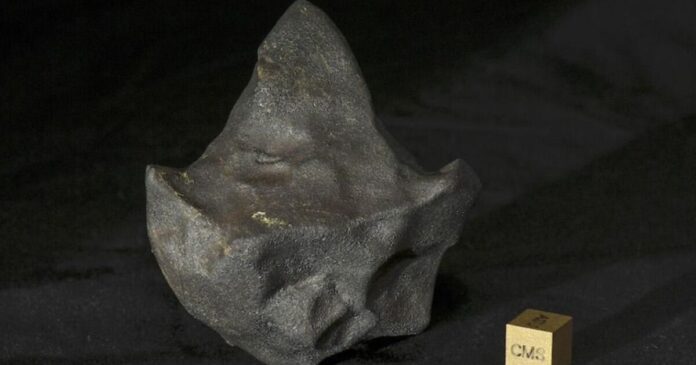Studied Space Rock Defies Conventional Thought
A New Perspective on Carbonaceous Chondrites
One of the most studied space rocks of all time has given scientists another big surprise, with the “mudball meteorite” Aguas Zarcas found to have been in orbit for two million years without crashing into any other objects – or if it did, there was no damage. It challenges conventional thought of the “fragile” carbonaceous chondrite class it belongs to.
The Meteorite’s Journey
This meteorite has captured people’s imaginations since it shot through Earth’s atmosphere in April 2019, splitting up and raining down on Costa Rica. In 2022, a doghouse that ended up on the receiving end of one rock, which left a seven-inch (18-cm) hole in the roof, sold at auction for nearly US$50,000. (Fortunately, German shepherd Roky – who had been sleeping inside the tinny structure – was unhurt and no doubt benefited from a kennel upgrade following the auction.)
A Collaborative Effort
“Twenty-seven kilos [60 lb] of rocks were recovered, making this the largest fall of its kind since similar meteorites fell near Murchison in Australia in 1969,” said meteor astronomer Peter Jenniskens of the SETI Institute and NASA Ames Research Center.
“Seventy-six papers have since been written about this meteorite,” added geologist Gerardo Soto of the University of Costa Rica, San José. “The fall of Aguas Zarcas was huge news in the country. No other fireball was as widely reported and then recovered as stones on the ground in Costa Rica in the last 150 years.”
A New Understanding
The pair collaborated on this new study tracing the meteorite’s origin story, using satellite data, radar, security cameras, and dashcams to trace the rock’s route to reaching Earth. While the end of its journey is well documented, its origins – most likely from an asteroid in the outer asteroid belt – is far more intriguing.
Defying Expectations
Carbonaceous chondrite rocks, however, are often called “mudballs” because they’re rich in carbon, organic material, and water-bearing minerals. This makes them susceptible to breaking up either in space or when they enter Earth’s atmosphere, and others like Sutter’s Mill and Flensburg had very little recoverable material for scientists to study. As such, they’ve had a reputation of being fragile.
“Other meteorites of this type are often described as mudballs, as they contain water-rich minerals,” said Jenniskens, “Apparently, that does not mean they are weak.”
A Historical Find
While Aguas Zarcas did eventually break up, around 25 km (15.5 miles) above the Earth’s surface, it didn’t shatter like others of its kind, leaving big chunks of intact rock. Analyzing cosmic ray exposure, essentially to “age” it, the scientists, along with University of California cosmochemist Kees Welten, determined that it most likely floated around in space for more than two million years without as much as a scratch.
“The last collision experienced by this rock was two million years ago,” said Welten.
Conclusion
The team’s findings give us new insight into carbonaceous chondrites, which are considered among the most primitive materials in the solar system. This latest research suggests Aguas Zarcas may be due for a better nickname than delicate “mudball meteorite.” The study was published in the journal Meteoritics & Planetary Science.

